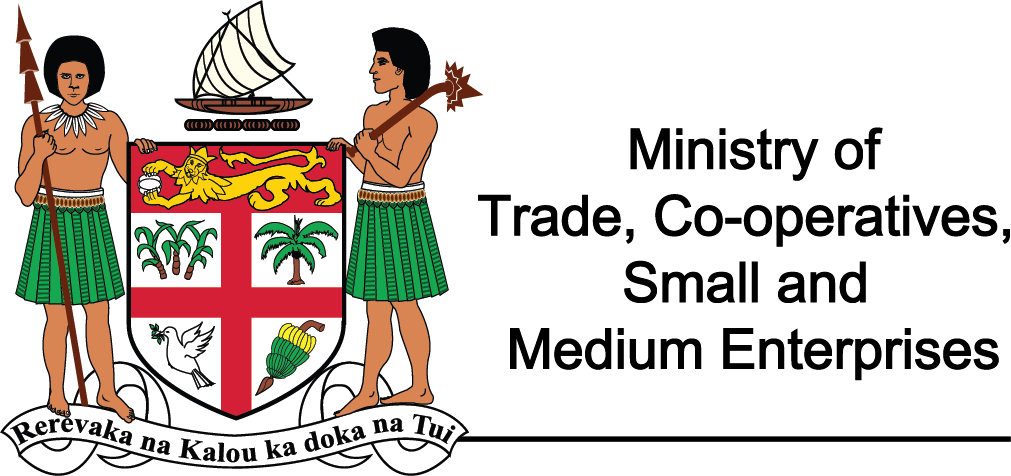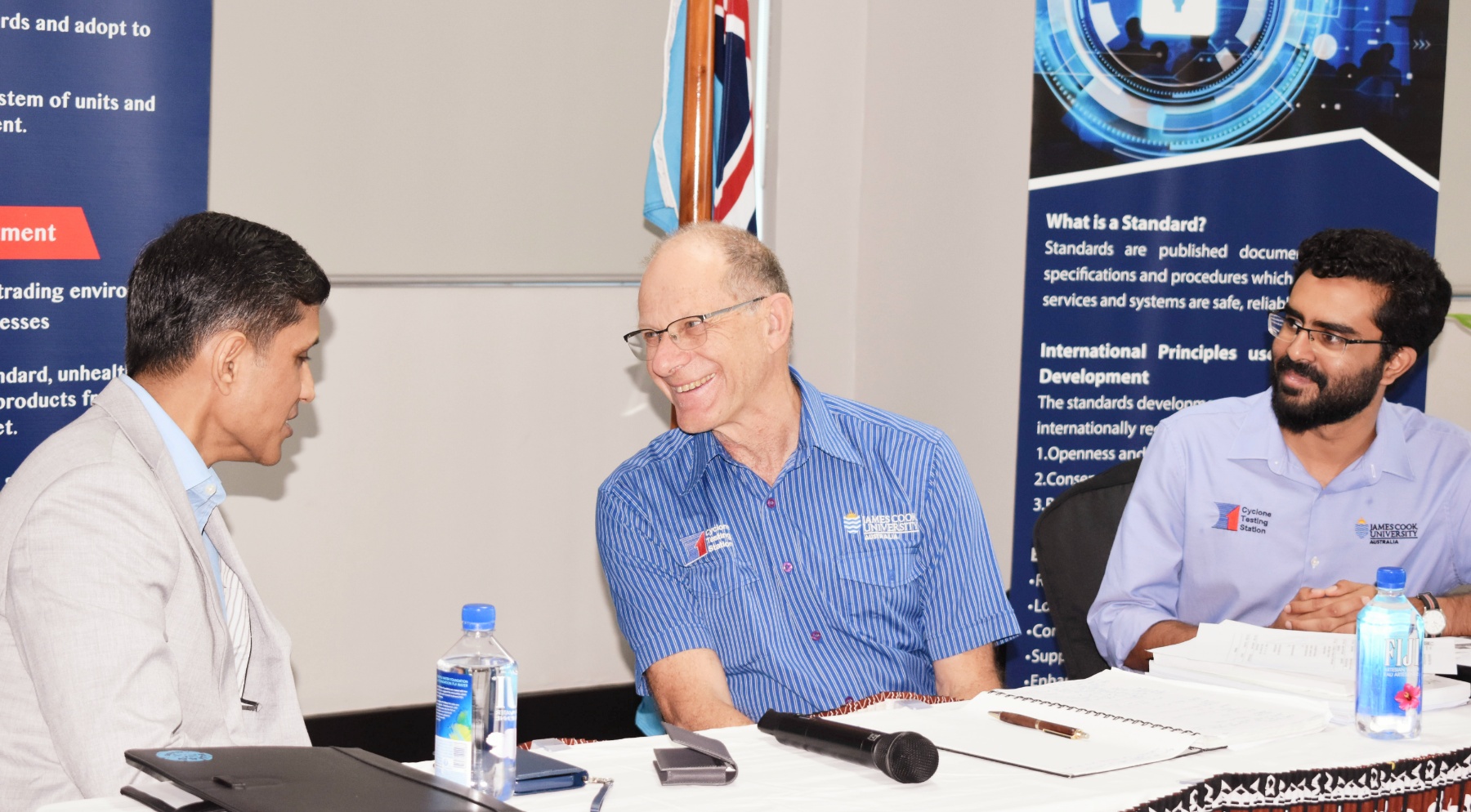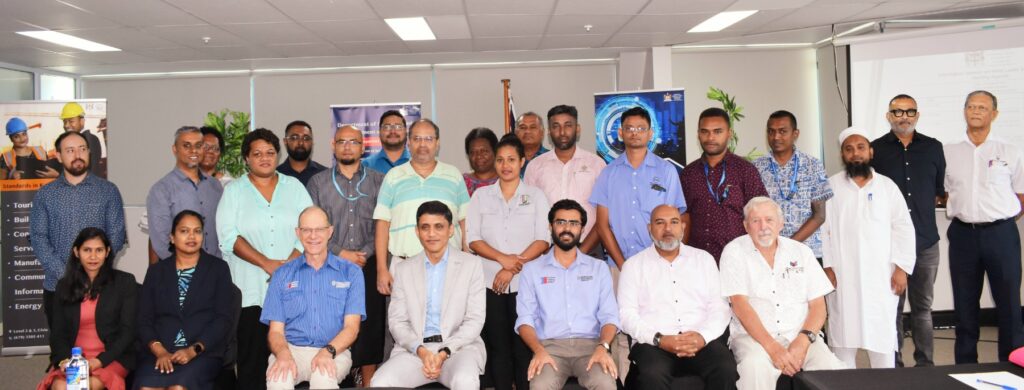Associate Professor, Dr Geoffrey Boughton,
Dr Kora Parackal,
Building and Construction Committee and Wind Load Committee of the Trade Standards Advisory Council,
Invited Guests,
Ladies and gentlemen,
Bula Vinaka and very good morning to you all.
Welcome to today’s Information Session on Wind Loads Standards.
The Ministry of Commerce, Trade, Tourism and Transport, through the Trade Standards Advisory Council, is in the process of adopting the Wind Loads Standards.
Today’s session is very important because it gives us a greater appreciation of the Standards and its relevance to climate resilient buildings and homes.
We are fortunate to have with us experts from James Cook University, who have been part of this journey, providing technical expertise in creating the Fijian version of the standards.
Ladies and Gentlemen,
Climate change will continue to be one of Fiji — and the world’s greatest challenges. There is no denying that the impacts of climate change are worsening every year. As a result, the structural demands on buildings continue to increase. The severity of damages and community disruption due to the tropical cyclones, Winston, Harold and Yasa have been extensive — with exorbitant rebuild costs.
According to the National Communication Report published by the Ministry of Economy in April 2020, the average annual asset losses from natural disasters are estimated at $500 million. This is more than 5 percent of our GDP. We have had 14 Cyclones since the super storm — Winston each one causing damage to property and impacting lives. The move to make our houses and properties more resilient to cyclonic conditions — I am sure will be welcomed by all.
Ladies and Gentlemen,
The Pacific Island nations contribute less than 0.03 per cent of the world’s total greenhouse gas (GHG) emissions, but are amongst the most vulnerable to the impacts of climate change. Despite the relatively small GHG emission, attributed to the transport sector, deforestation and land use, the emissions growth expected from economic development and energy use are enough to demand mitigation responses.
This is why the Ministry is working to create standards and guidelines to address the challenges of climate change. Since 2016, there have been a series of standards that have been either updated or adopted as Fijian Standards, in our efforts to have climate resilient buildings.
Ladies and Gentlemen,
Some key guidelines and standards that have been published to address climate change issues, include Steel Reinforcement Materials Standard and Guideline for Improving Building Safety and Resilience of New Single Storey Houses and Schools in Rural Areas of Fiji.
The Wind Load Standards is an additional policy instrument that aids in future-proofing our buildings and homes.
The Fijian Standards are based on Australian and New Zealand Standards or AS/NZS 4055 but have been modified according to the conditions prevailing in Fiji’s cyclonic region.
This Standard simply provides the procedures to determine the loads on specific structures in specific locations for specific conditions and needs. It is a guide to designers, builders and manufacturers of building materials.
It assists in determining the design of the building to allow it to withstand cyclones, and in Fiji’s case, Category 5 cyclones. The same rules cannot be applied for a house built on the top of a hill or that in the valley.
Ladies and Gentlemen,
We are glad that experts from James Cook University and local experts from Fiji Meteorological Services, Fiji Institute of Engineers, Habitat for Humanity Fiji, Ministry of Infrastructure and Meteorological Services, Fiji Association of Architects, Fiji Manufacturers Association and other agencies provided their expertise to modify the Australian Wind Loads Standards.
The Fijian Wind Loads Standards will ensure that the design loads are appropriate for the anticipated cyclonic winds compatible with climate change models.
Ladies and Gentlemen,
The Fijian Wind Loads Standards will be codified in Fiji National Building Code (FNBC) to ensure compliance with the requirements and that we have disaster resilient buildings. The engineers and designers are expected to follow the Wind Loads Standards as it is referenced under the FNBC.
The details associated with the implementation of these standards — I am sure is a matter of keen interest — not only with the relevant agencies but the private sector. We aim to do this collaboratively — taking the input of everyone involved.
Ladies and Gentlemen,
The Fijian Government has been at the forefront in the global call for action to mitigate and adapt measures. We are not only creating standards but are putting in place various policies, laws, strategies, and incentives to mitigate climate change challenges. These include:
- Tax incentives for Electric Vehicle (EV) and EV Charging Station Development.
- Grant support for low and middle-income households and people living in informal settlements and having available standardised single-storey house plans, which are compliant to withstand category 4 tropical cyclones.
- Development of a National Climate Finance Strategy.
- Green shipping initiatives.
- Euro-5 compliant Fuel Standards.
Ladies and Gentlemen,
The objective of this information session is to bring together practitioners who we believe are potential end-users of the standards.
Please make use of the opportunity to ask questions and share your experiences with the experts and the Ministry officials who are here this morning.
With those words, it gives me great pleasure to officially open this Information Session Workshop.
I hope this Information Session will be useful for you and your organisation.
Vinaka Vakalevu. Thank you.




